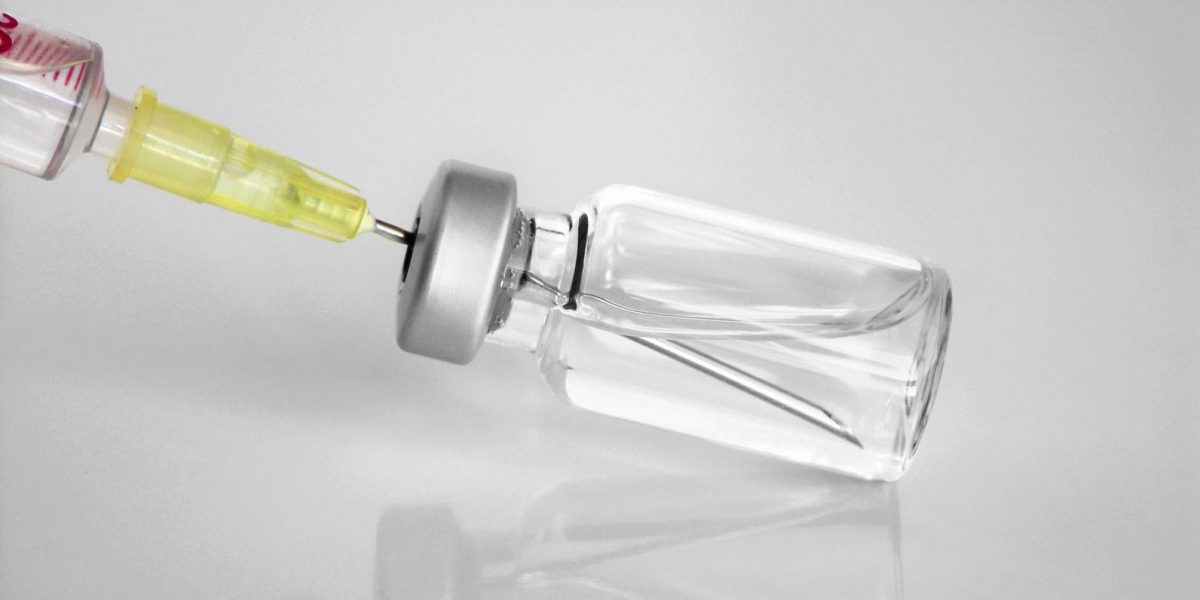Vaccines - Are They Safe?
Editor’s Note: Based on a June 2021 study by the KFF, a leader in health public policy analysis, when unvaccinated adults who are asked to choose the main reason they have not yet gotten the COVID-19 vaccine, 20% cite the newness of the vaccine, while another 11% say they are worried about side effects. Nearly 1/3 of the unvaccinated population cite a mistrust in the pharmaceutical industry and government agencies to deliver a safe, effective vaccine.
In order to understand whether these concerns & objections are compelling or not, we need to get a better understanding of the history, protocols, and safety mechanisms that typically go into the vaccine creation and approval process. To help us understand the process in which drugs are developed, manufactured, approved, and regulated, we teamed with Phil DeSantis, an executive and thought leader in the Pharmaceutical Engineering and Compliance space. He is a published author and educator with 50 years of experience.
A Little History
Before exploring the drug approval process it is important to understand the history of drug regulation in the United States. In 1906, as a reaction to Upton Sinclair’s novel The Jungle, the US Congress moved to pass the Food and Drug Act. Sinclair’s book was originally intended to focus on the harsh lives immigrants were forced to endure in an effort to promote social programs. The public, however, was more concerned about the health violations and unsanitary conditions it exposed in the meat packing industry. The Food and Drug Act was intended to bring government oversight to food and medicines and gave regulatory authority to what had formerly been the Bureau of Chemistry in the Department of Agriculture, re-established as the Food & Drug Administration (FDA). Up until then the drug industry was largely local apothecaries and no few “snake-oil” purveyors.
In 1932, another crisis arose, this time in the drug industry. In an effort to provide a liquid form of the antibiotic sulfanilamide, the drug manufacturer sought a suitable material to dissolve the drug and settled on ethylene glycol, a common solvent, currently used in auto anti-freeze. It was pleasant-tasting and easily dissolved the drug. When distributed, however, the new formulation resulted in numerous deaths, mostly among children. The manufacturer had failed to consider that ethylene glycol was toxic and could be extremely dangerous to many patients. This incident resulted in a revised law, the Food and Drug and Cosmetic (FD&C) Act, requiring that any new drug or drug formulation be tested for safety before it could be approved for distribution. Cosmetics and medical devices were brought within the umbrella of the new las, as well.
Calamity reared its ugly head again in the late 1950s with the widespread use of the anti-anxiety medication thalidomide. It was used for many purposes, including treating colds and flu, nausea and ultimately morning sickness in pregnant woman. This last indication was the root of the tragic deaths of over 2000 babies and terrible deformities in over 10,000 others. Stories and pictures filled the headlines of the day. Fortunately, an astute reviewer in the FDA had withheld approval and the drug did not enter the United States. What thalidomide triggered in the US, however, were the 1962 amendments to the FD&C Act, known as the Harris-Kefauver Amendments, after their sponsors. These were the most far-reaching changes to drug regulation up until that time and form the basis for drug approval that remains in effect today.
The 1962 Amendments added several important requirements to the drug approval process. First, the drug must not only be safe (already established in 1932) but it had to be safe in any form or treatment for which it may be used. That meant that if it was intended for use in children or pregnant woman, it must be proven safe for that patient group. Secondly, it must not only be safe, but it must actually work the way it is claimed to work. This is known as the efficacy requirement. Together, safety and efficacy form the foundation for drug approval across the world. (The FD&C Act actually lists safety, identity, strength, purity and quality or SISPQ, but safety and efficacy pretty much encompass all of these elements). Further detail regarding efficacy in the amended Act requires that efficacy must also be proven for every claimed use of the drug, called indications. This means that a drug approved for, say, colon cancer, cannot be marketed or distributed for bladder cancer until it has been approved for that indication. (More about approved indications later in the paper). Lastly the 1962 Amendments added the requirement of Good Manufacturing Practices to ensure that marketed approved drug products be manufactured in a manner ensuring that they retained all the characteristics that the initial approvals entailed. These are important because, beyond initial approval, GMP regulations are critical to the continued availability of safe and effective drugs to public.
FDA - A Simplified Overview
The FD&C Act has been tinkered with and modified over the years, but drug regulation today still rests on the 1962 Harris-Kefauver Amendments. Although the US played a pioneering role in drug regulation the rest of the world has followed with similar laws. The European Union has its own laws, as do Japan, China and most of the major developed nations. Some smaller nations adopt the guidelines established by the World Health Organization (WHO) as law or regulation.
In the United States, the FD&C Act empowers the FDA to interpret and enforce the law. As such, the FDA issues regulations to accomplish that purpose. These regulations are compiled in Title 21 Drugs in the Code of Federal Regulations (CFR). Although there is a review cycle during which the FDA is required to consider comments and issues raised by the public (and the “public” includes the pharmaceutical industry), it should be noted that Congress does not vote on these regulations. Once issued (the legal term is promulgated), they become law themselves. Like any law, however, these regulations may be challenged in court, as has been done a number of times. The FDA usually wins.
The FDA is organized into a number of Centers and Offices, each with a specific function (although cross-collaboration among the FDA entities is common and even essential). [2] With regard to human health the most important to be familiar with are the Center of Drug Evaluation and Research (CDER – phonetically, see-der) and the Center for Biologics Evaluation and Research (CBER) and the Office of Regulatory Affairs (ORA, simply called O-R-A). CDER regulates drugs used as therapeutic agents to treat disease, including those produced by biochemical means. CBER regulates biologics, including vaccines that prevent rather than treat disease, cell and gene therapy, and blood products. ORA are the field force who inspect the manufacturing sites for compliance to the GMP regulations. These are introduced because there are always at least two of these divisions involved in the approval of a new product, either CDER or CDER along with ORA.
Depending on the product and how it is used, one of the Centers (CDER or CBER) is responsible for the review of safety and efficacy data that proves the product is suitable for use by the public. The initiation and progress of the drug approval process is described below. Besides review and approval they each also have internal divisions that deal with manufacturing issues and problems in conjunction with ORA.
ORA are “the cops”. The ORA Regional and District offices are responsible to inspect any manufacturing site that falls under the jurisdiction of the FDA. This includes drugs, biologics, foods, cosmetics and medical devices. ORA has filed investigators specially trained in drug and biologic manufacturing scattered across the country to ensure that inspections are carried out by trained and knowledgeable personnel. When a drug or biologic has reached the approval stage (termed “approvable” by one of the Centers), ORA will usually conduct a pre-approval inspection (PAI), sometimes accompanied by representatives of the concerned Center.
Drug Discovery
From the industry side, the development of a new drug or biological entity is a complex series of events. The entire process may take many years, even decades, even though some recent examples appear to have circumvented that rule.
Ideas for new drugs come from numerous directions, sometimes out of an intense discovery process and sometimes from shear dumb luck. These ideas may originate in a pharmaceutical company, in a college or university laboratory, from the government itself (an example being the National Institutes of Health – NIH) or even from private individuals, albeit rarely. In the earlier days of medicine, physicians and apothecaries/pharmacists would identify a condition or disease to treat and use whatever knowledge they had to treat it. Sometimes this would involve the trial and error application of known remedies to new diseases. This practice made its way into the early pharmaceutical industry and persisted for a long time.
As knowledge was gained about the function of the human body on a more detailed level, such as cellular function, the idea of targeting disease with specific means of treatment took hold. By thinking on a cellular level, the physician or pharmacist could better predict what drug might work to treat a specific disease. As time went by and more knowledge was accumulated, databases of potential drug candidates (or chemical entities) were established and high-speed computers could be used to screen these entities for potential application.
So far, most of this discussion is applicable to what we know as “small-molecules”, usually organic, but sometime inorganic chemicals that might have a therapeutic purpose. In parallel to this type of discovery research, the concept of vaccines as a preventative means to combat disease was also rising.
Around the early to mid-80s, biological DNA research started to pay off at the molecular level with the approval of the first recombinant-DNA products. [3]. These were initially forms of actual biological materials in the life-cycle of human cells (e.g., insulin, erythropoietin) that were synthesized using biochemical processes. As time went by, the studies of disease along with cellular function at the molecular level led to an even more precise discovery approach, where molecular entities could be targeted at specific cellular sites to perform some therapeutic or immunologic function, the so-called “magic bullets”.
The point of this discussion is that regardless of the type of molecular entity, whether small or large molecule, receptor modulator or monoclonal antibody, the discovery process may take several years. The recent example of mRNA vaccines (the Pfizer and Modena Covid vaccines) being developed and approved so quickly may be somewhat misleading. The mechanism of mRNA-triggered immunology has been studied for at least a decade. Advances in nucleic acid characterization (i.e., DNA and RNA, the main functionaries in cell function) and replication allowed researchers to identify the applicable RNA structure of the virus and replicate it within a matter of weeks to produce a viable vaccine. The rest of the time was spent in accelerated clinical studies, discussed further below.
For most new drug candidates the discovery process moves into pre-clinical studies. Here the researchers screen the candidate drugs further for safety, often using animal models, in vivo (literally, “in the living”). Because of their unique application, pre-clinical trials for vaccines may employ pre-clinical testing on human cells. Animal models usually start with smaller species (e.g., mice, rats) and progress to larger (e.g., dogs) and finally to primates (e.g., monkeys). Depending upon the successes and failures encountered, these studies can also take years. Vaccine testing on human cells in vitro (literally “in glass”) can be and have been accelerated using modern analytical techniques. Whether in vitro or in vivo, many candidates are weeded out in this process and never enter human trials. Pre-clinical trials are governed by the FDA by a set of regulations known as Good Laboratory Practices. Data submitted that does not conform to these regulations may not be accepted in support of clinical trials in humans.
Drug Development
Drug Discovery represents the “R” in R&D, while the “D” is a necessary and often even more involved aspect of the drug approval process. Once a new molecular entity has been passed through pre-clinical studies successfully, a sponsor organization may apply for an Investigational New Drug (IND) requesting the introduction of the drug into human trials. Backed by pre-clinical data and demonstration of medical need, a successful IND application triggers a two-pronged level of effort: clinical trials and drug development.
Clinical Trials
Clinical Trials are usually sequenced in three or more phases, each with a specific purpose or set of purposes. [4]. These follow:
- Phase 1 Trials are performed on a small group of healthy patients to determine drug safety. The Phase 1 group usually consists of 10 – 100 subjects and may also provide information on how the drug reacts within the body and is metabolized and/or eliminated. Side effects will also be noted.
- Phase 2 Trials begin to look at efficacy in a group of several hundred patients with the subject disease or condition. This phase continues to look at safety and side effects, often beginning the process of optimizing dosage levels to achieve efficacy while minimizing side effects. Often, a second series of Phase 2 trials (Phase 2a) are employed to gather more knowledge across a somewhat broader cross-section of the patient population and to fine tune dosage.
- Phase 3 Trials are longer term with a much larger patient group, usually in the thousands, and sometimes, as in the case of Covid 19, in the tens of thousands. These studies are most often “double blind” with one group of patients receiving the drug and another a placebo mimicking the drug in physical appearance. Neither the groups nor the study facilitators, knows which dose they are receiving. (That information is secure in the files of the sponsoring firm and the actual doses are coded by traceable numbers).
Depending on the disease group, these studies can take years. On average, clinical studies for both small molecule drugs and biologicals take between 7 and 9 years. [3] The success rate for these trials is by no means a certainty, with only about 10% of drugs entering Phase I trials emerging to be ultimately approved. Of these, somewhere around 30% fail in Phase 2 and nearly 60% in Phase 3. (The pharmaceutical industry does have a point when pointing out the cost of this research and development with such a low success rate). On those occasions where the study is successful (measured against a pre-determined acceptance criterion or end-point) the sponor will file a New Drug Application (NDA) or a Biological License Application (BLA).
The astoundingly rapid testing and approval of the Covid 19 vaccines is an exception to the rule. As previously pointed out, the science of mRNA vaccines was well understood prior to the specific configuration of the Pfizer and Moderna vaccines. The clinical trials benefitted from a highly unusual coordination among government, industry and the medical community and the recruitment of a very large and diverse patient population (the Pfizer Phase 3 study had over 40,000 participants worldwide).
Ofttimes after a drug or vaccine is approved, data gathering continues in a controlled clinical setting, sometime called Phase 4, in order to study long term effects, varying dosage or to add diversity to the study group.
Formulation and Process Development
While Phase 1 clinicals are usually supplied with product produced in a laboratory, that product rarely represents what will ultimately be released into commercial production. While clinical studies are ongoing, drug development proceeds in parallel in order to establish the best route of administration (oral, sub-lingual, sub-cutaneous, etc.), formulation, dosage form (tablet, capsule, etc.). As these questions are answered a reliable process must be developed to ensure that, once approved, the product produced on the large scale will be the same as that studied in clinicals. The rule usually followed is that Phase 2 studies should have the formulation and dosage established, while Phase 3 supplies should be produced using the ultimate commercial process (as close as possible, usually at a smaller scale).
This dual effort is a race against time, with development needing to stay a half step ahead of the clinical trials. In cases where trials fail, the cost of these efforts are also lost.
Manufacturing
The discovery, development and approval process can take years and in some cases decades. The large proportion of failed drug candidates makes it imperative that companies are ready to launch into commercial distribution as soon after approval as possible. This means that they must have a manufacturing facility available. This may be one of their own or a contract manufacturing organization (CMO). Whichever is chosen, the plant is subject to a pre-approval inspection (PAI) by FDA before final approval of the drug. Manufacturing plants must meet a rigid set of standards dictated by the regulations and interpreted and perfected by the industry. Companies are expected to apply new and better methods as they are proven to work. This is why the manufacturing regulations are entitled CGMP, where the C indicates “Current”.
A major aspect of the Pre-approval inspection is to review the process to determine that it has been validated, that is, proven to be reliable through rigorous testing and challenges, and that it represents the process used to produce clinical trials material.
The CGMP regulations also require an extensive program of written procedures and documentation to provide a permanent and secure record of drug manufacturing and final product testing. (Computerized records are allowed if proven to be secure and unaltered).
Manufacturing facilities must be laid out to prevent mix-ups, constructed of cleanable, durable materials that do not contaminate product and must be controlled in a manner that prevents contamination of the product in any way. The FDA inspects these plants on average every two years.
Summary
From what has been presented, it should be apparent that the life-cycle of a drug product or vaccine is a long and arduous one, with many failures contributing to few successes. Nonetheless, the availability of drugs and biologics in the US has led to the eradication of numerous deadly diseases and the improvement in quality of life and life expectancy in many others. All of this at a cost of around 10% of total healthcare spending. [1] Big Pharma takes a lot of hits in the media, often rightfully so. It important for the public to continue to lobby for broader access to drugs and vaccines for all communities, while being wary of destroying the incentives for the industry to continue to innovate and provide new and better treatments. We can have it both ways and we should be vocal in that belief.
References
- American Medical Association, Trends in Healthcare Spending, online 2021
- FDA Website, FDA.gov
- Kinch, Michael, An Overview of FDA-approved Biologics Medicines, Drug Discovery Today, Vol. 20, No. 4, April 2015
- Van Norman, Gail A., Phase 1I Trials in Drug Development and Adaptive Trial Design, JACC Basic to Translational Science, June 2019

Phil DeSantis, Contributor
Phil is a chemical engineer, having received a BSChE from the University of Pennsylvania and an MSChE from New Jersey Institute of Technology. He has over fifty years of pharmaceutical engineering industry experience. He is on the PDA Scientific Advisory Board and is active in the International Society for Pharmaceutical Engineering (ISPE). He has been as a frequent lecturer for both organizations. He has published or contributed to several articles and books in the area of validation and pharmaceutical engineering.





